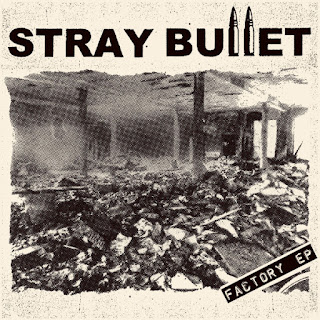Sobriquet 44.7
The following post was originally published on 7/8/08.
Despite the ninety-degree (32 Centigrade for my non-North American readers) heat and an air conditioner in need of a new filter, I managed to stay comfortable enough to get some work done, albeit sweatily. I read another bit of Boyhood, which I continue to find fascinating. I've not read many memoirs and, to be honest, some recent "masterpieces" of the form have not gripped me strongly enough for me to share the enthusiasm for the genre that has been blossoming in recent years. That said, I do believe memoirists have the potential to transform their lives into the stuff of universally relevant art and Coetzee, in my opinion, does precisely this with Boyhood.
Other than reading the memoir, I have been taking it a bit easier than I have for some time, largely because the amount of academic writing I read in June began taking a toll on my ability to concentrate. Having grown accustomed to reading such material, however, I continue to feel a tiny twinge of obligation to pick up an article each day, especially because there are still so many essays to read and only a finite number of summer afternoons and evenings left in which to splay myself out on the futon or sit leisurely at a cafe, highlighter in hand. But we'll get through it all eventually (why I resort to a rhetorical strategy like the royal we is beyond me).
At any rate, I did want to briefly mention the two essays I read last week but had not gotten around to discussing. Rosemarie Buikema's "Literature and the Production of Ambiguous Memory: Confession and Double Thoughts in Coetzee's Disgrace" falls into what I have begun referring to as the Truth and Reconciliation school of Disgrace criticism. Broadly speaking, there are roughly three major clusters of scholarly discussion surrounding the novel. Naturally, a good deal of the criticism on the novel falls outside the umbrage cast by these umbrella categories but I would venture to say at least half of the commentary on Disgrace could be classified as one of the following three types:
1. Truth and Reconciliation: criticism in this category tends to focus on Coetzee's treatment of the reconciliation process in post-Apartheid South Africa. It deals extensively with race relations and often views David Lurie's disciplinary hearing as either a metaphor for the TRC itself or as an expression and exploration of the dynamics underlying such attempts at reconciling historically antagonistic parties. Lucy Lurie's attitudes towards Peturus, Pollux, and the two unnamed assailants and David's encounter with Mr. Isaacs in George also figure prominently in such criticism.2. Animals and human-animal relations: this school of criticism tends to focus on Lurie's relationship with dogs. Anthropomorphism and de-humanization are often major threads in this type of essay. The Lives of Animals and Elizabeth Costello, understandably, provide a wealth of intertextual insights and critics often discuss Coetzee's use of the figure of the absolute other as evidence of the novel's continuation of the author's career-long concern with issues relating to alterity and representation.3. Socio-political criticism: often sharing a concern for issues of interest to Truth and Reconciliation critics, socio-political criticism also focuses on representations of post-Apartheid violence, racism, sexism, and related tensions not exclusively the focus of the TRC. Lucy's rape, Lurie's assault on Melanie, and Petrus's relationship to the Luries tend to be central concerns for such critics. Much of the criticism in this vein, though certainly not all, views Disgrace in a negative manner, as a hopelessly bleak portrayal of the still-nascent Rainbow Nation.
Obviously, most articles extend beyond the concerns of a given category, quite a few could fall into at least two of them, and many do not fit into any at all. But I do find it helpful to arrange my mental notes in this way.
At any rate, Buikema's essay fits into the first category and save for a few factual errors (Lurie's assailants do not "pour gasoline on Lurie," as she claims, for instance; the men actually pour mentholated spirits on him), it provides a strong reading of the novel as deceptively and problematically allegorical (192). Readers interested in examining the ways in which literature can help shape and question the production of memory (especially that which has been shaped by officially-sanctioned organizations) will find it indispensable.
Elleke Boehmer's "Sorry, Sorrier, Sorriest: The Gendering of Contrition in J . M. Coetzee's Disgrace," like many articles, interprets the novel's depiction of violence in South Africa as a bleak portrait of a society in which enduring the manifestation of historically-repressed animosity is the only option for those people unfortunate enough to live during an era "where the present is more often than not a rehearsal and prolongation of the past" (136). Where Boehmer differs from critics similarly convinced of the novel's "grin and bear it" attitude is in her frustration with Coetzee's depiction of female acquiescence. Understandably, Boehmer finds Lucy's attitude towards her rape problematic. After all, Boehmer asks, "[i]s reconciliation with a history of violence possible if the woman . . . is, as ever, barefoot and pregnant, and biting her lip?" (146).
For tomorrow: Read some more of Boyhood.
Works Cited
Boehmer, Elleke. "Sorry, Sorrier, Sorriest: The Gendering of Contrition in J . M. Coetzee's Disgrace." J. M. Coetzee and the Idea of the Public Intellectual. Athens, Ohio: Ohio UP, 2006. 135-147.
Buikema, Rosemarie. "Literature and the Production of Ambiguous Memory: Confession and Double Thoughts in Coetzee's Disgrace." European Journal of English Studies 10.2 (2006): 187-197.




Comments
Post a Comment